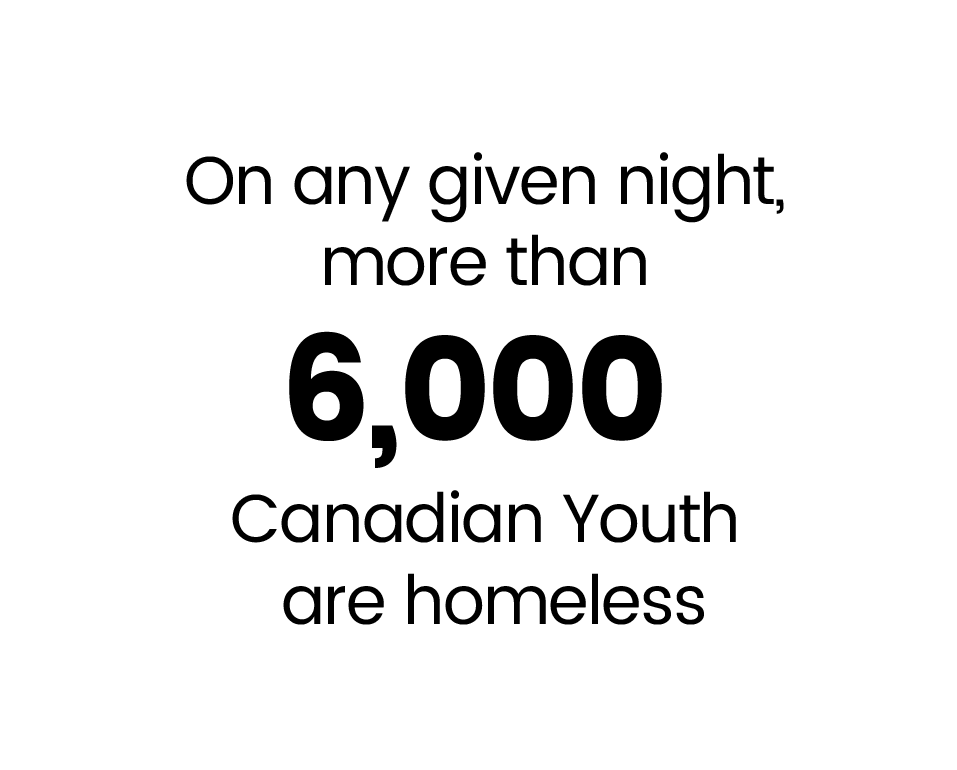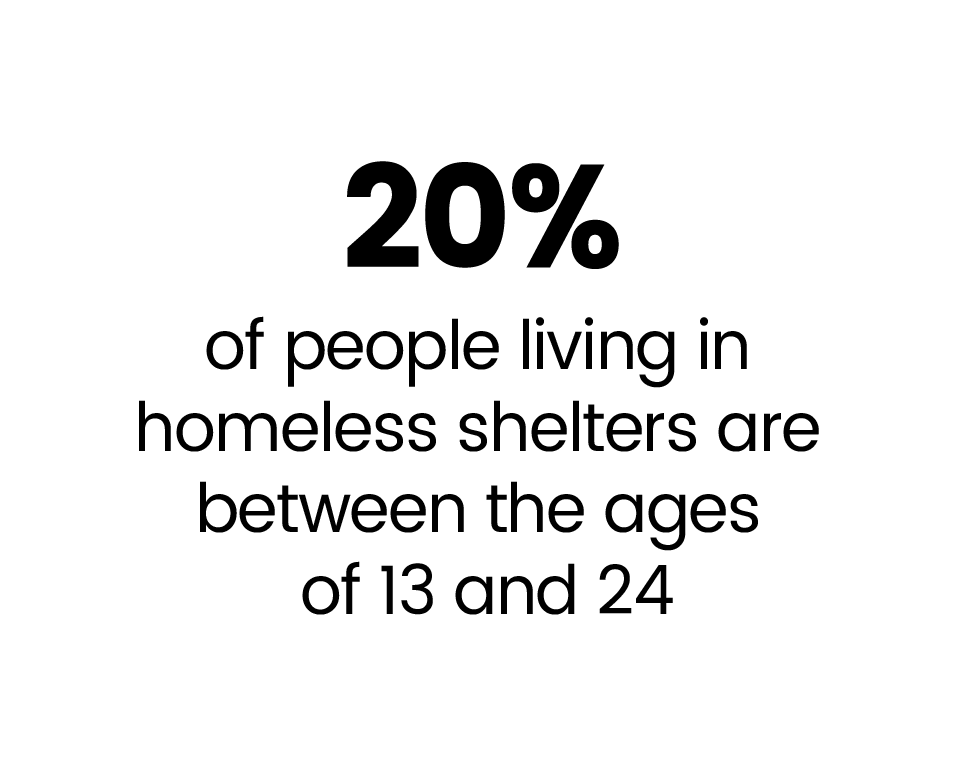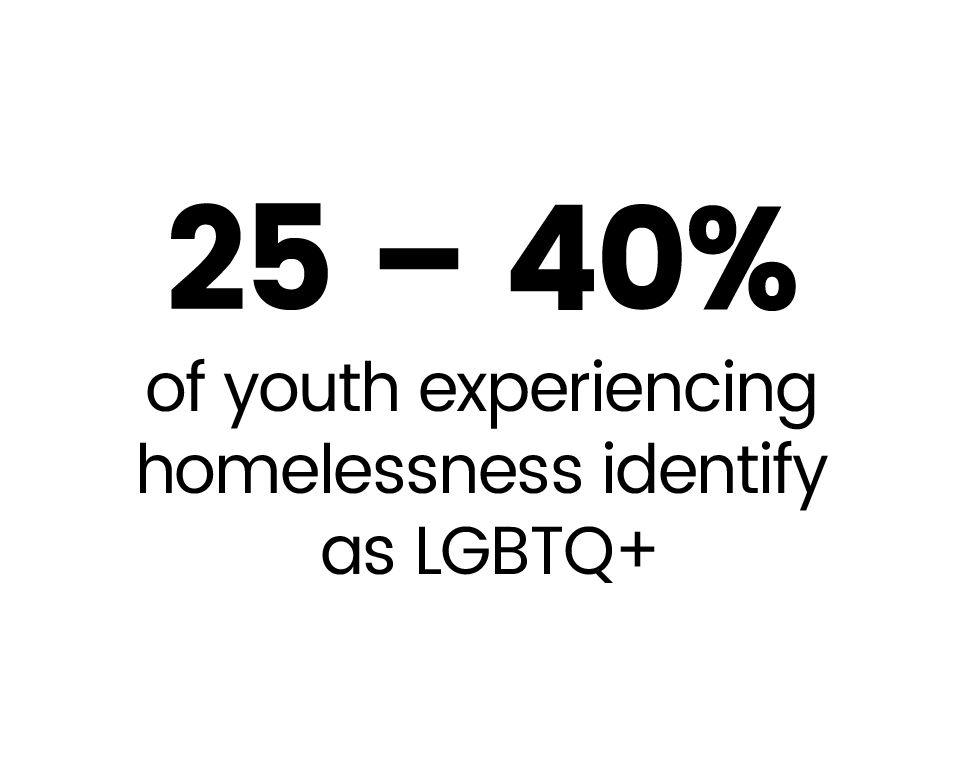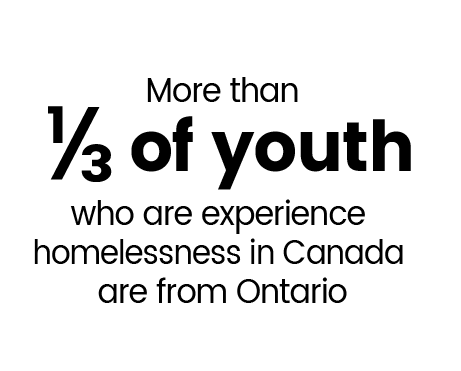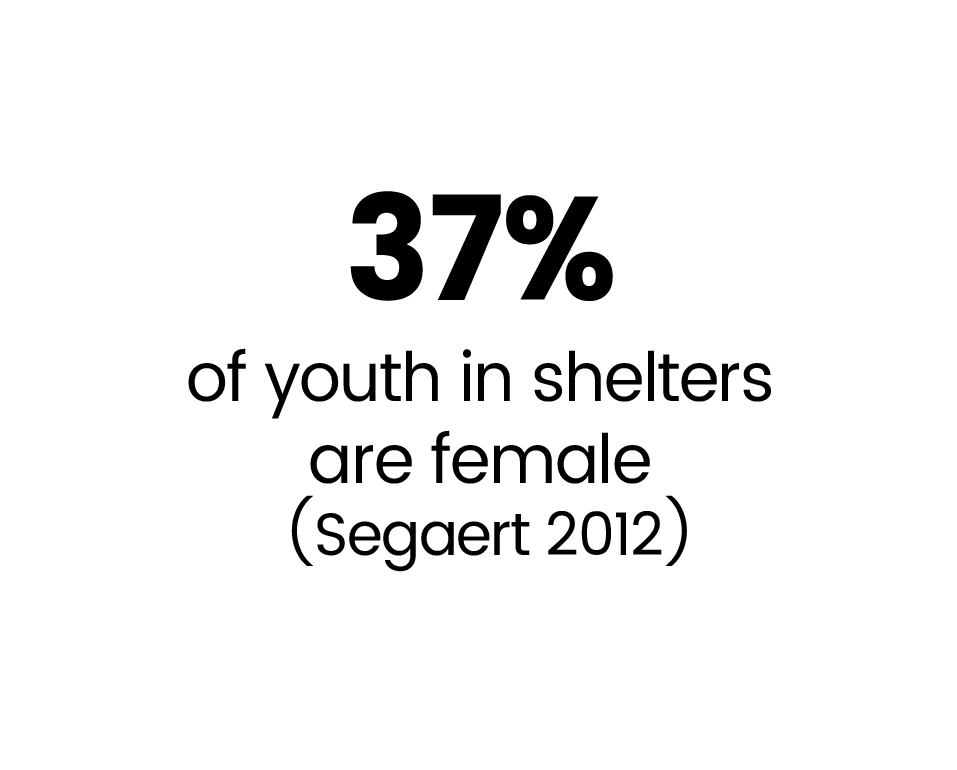Causes of Youth Homelessness
Homeless youth often lack the experience and skills to live independently
Approximately 65% come from families that struggle with substance abuse
%
of youth identified family breakdown and conflict with parents at the primary reason the entered into homelessness
%
have experienced some form of childhood trauma and abuse
%
of youth who experience homelessness have had child welfare system involvement at some point in their lives, sometimes moving through multiple foster homes and group homes before ending up on the streets

Causes of Youth Homelessness
Homeless youth often lack the experience and skills to live independently
Approximately 65% come from families that struggle with substance abuse
%
of youth identified family breakdown and conflict with parents at the primary reason the entered into homelessness
%
have experienced some form of childhood trauma and abuse
%
of youth who experience homelessness have had child welfare system involvement at some point in their lives, sometimes moving through multiple foster homes and group homes before ending up on the streets

Impact of Homelessness
- Approximately 60% of homeless youth have completed Grade 11 or less. Up to 65% have not completed high school
- 1 in 3 youth experiencing homelessness graduate high school vs. 9 in 10 housed youth
- Some youth discussed cycling in and out of family homelessness, trying to hide their poverty from their classmates, and experiencing neglect
- Unemployment rates among high school dropouts are twice that of high school graduates
- 85.4% of youth experiencing homelessness report high symptoms of distress
- 42% of youth experiencing homelessness report at least one suicide attempt
Long-Term Implications of Youth Homelessness
-
- Increased risk of exploitation, violence, victimization, physical and sexual abuse
- Greater involvement with the police and the justice system
- Disengagement from school and difficulty obtaining employment
- Youth experiencing homelessness have difficulty developing long-term, healthy, trusting relationships
Sources include: Without A Home, The National Youth Homelessness Survey (2016: Stephen Gaetz, Bill O’Grady, Sean Kidd, Kaitlin Schwan, Canadian Observatory on Homelessness, A Way Home, The Home Depot Canada Foundation/The Orange Door Project.)
Myths about youth homelessness
MYTH: They are to blame for being homeless.
FACT: Most homeless people are victims. Some have suffered from child abuse or violence. Many have lost their jobs. All have lost their homes. Individuals who have had previous experiences with foster care are at a higher risk for experiencing homelessness, particularly when transitioning from foster care. For many young people, their first experience of homelessness occurs well before they are entitled to access interventions and supports. Most youth traced the origins of their homelessness back to systems failures
MYTH: Most homeless people live on the street.
FACT: Most homeless people don’t live on the street. More than 80% of Canada’s homeless are improperly housed or on the verge of eviction. Many are sleeping in temporary beds – with friends or relatives, in church basements, in welfare motels, in abandoned buildings and vehicles, and in other sites away from the public eye. They are the hidden homeless.
MYTH: They don’t work.
FACT: Many homeless people are among the working poor. A person earning a minimum wage can’t earn enough to support a family of three or pay rent. Youth vividly describe experiences of discrimination and stigmatization when applying to rent housing, accessing income supports, or obtaining a job. They may not have the education or experience required to get even a minimum-wage job. They likely don’t know how to look for apartments, and even if they do, they’ll find many landlords are hostile to the idea of teen tenants.
MYTH: They are heavy drug users.
FACT: Some homeless are substance abusers; research suggests one in five. Many of these are included in the 39% who suffer from mental illness.
MYTH: They are dangerous.
FACT: Sometimes an encounter with the homeless may end in tragedy. However, this is extremely rare. In general, the homeless are among the least threatening group in our society. They are often the victims of crimes, not the perpetrators.
Sources include: Without A Home, The National Youth Homelessness Survey (2016: Stephen Gaetz, Bill O’Grady, Sean Kidd, Kaitlin Schwan, Canadian Observatory on Homelessness, A Way Home, The Home Depot Canada Foundation/The Orange Door Project.) The Road To Solutions by Raising the Roof, March 2009
Resources
To learn more about homelessness please refer to the following:
United Way KFL&A: Youth Homelessness
https://www.unitedwaykfla.ca/youth/
Homeless Hub: Supporting communities to prevent and end homelessness
https://www.homelesshub.ca/about-homelessness/population-specific/youth
City of Kingston: Studies, Initiatives & Reports
https://www.cityofkingston.ca/residents/community-services/housing/studies-initiatives
Homeless Hub: What would it take: Youth across Canada speak out on Youth Homelessness Prevention
https://www.homelesshub.ca/WhatWoulditTake
Homeless Hub: Opportunity Knocks: Prioritizing Canada’s Most Vulnerable Youth



